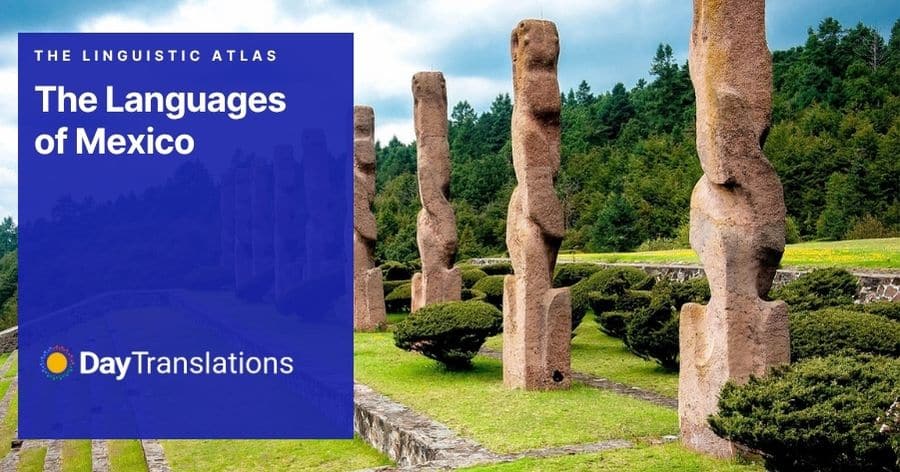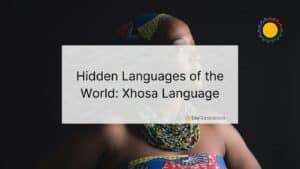Placed between the USA in the north and South America, Mexico has always been in the middle of historical, political, and economic changes. Due to such a specific position, Mexico is among the most diverse countries in the world in terms of the number of languages used by different ethnic groups.
When it comes to the languages of Mexico, the official number of recognised languages spoken in Mexico is 69. But if we take into account various dialects, as well, we can say there are 287 languages and dialects in this Latin American country. This number puts Mexico in the high 6th position among the countries with the highest language diversity.
Let’s see where this diversity originates from, and what languages do Mexicans speak.
Official Languages of Mexico
Under the Constitution of Mexico, there’s no single official language in this country. Still, with more than 120 million speakers, Spanish is the most widely spoken language on a national level. This makes Mexico the country with the highest number of Spanish speakers in the world.
In 2003, the Mexican Congress made a decision under which Spanish and the indigenous languages of Mexico were given the same status, out of respect for the smaller languages and dialects spoken in this country. The official documents issued by the Mexican government and administration are written in Spanish, though. Also, Spanish is the language spoken in that official context.
Indigenous Languages of Mexico
Out of the 69 recognized languages of Mexico mentioned above, the government officially accepts the existence of 63 local languages, most of which are used in smaller, geographically restricted communities.
So, the indigenous languages of Mexico include Yucatec Mayan, Nahuatl, Mixtec, and other smaller languages. What’s more, the top 3 languages in Mexico are Spanish, Yucatec Maya, and Nahuatl. Around 850,000 people speak Yucatec Maya, which is the third most widely spoken language in Mexico. Nahuatl is the second most-spoken language, with around 1,7 million speakers. And the winner is the Spanish language, as the leading language of the Mexico language community.
Some other indigenous languages of Mexico include Otomi, Mazateco, Chol, and many other languages.
Is There a Mexican Language?
The fast and straightforward answer to this question is that there is no single Mexican language. Just like when we’re talking about the languages of Nigeria, where there’s no Nigerian language, the situation is similar in Mexico.
And this is the case mostly due to historical reasons. During the Age of Discovery, Spanish colonists conquered the Aztec Empire in the 16th century, introducing the Spanish language and culture to the indigenous people of Mexico (mostly Aztecs, but also Mayans, and some other ethnic groups). So, at that time, answering what language do Mexicans speak would be much different than today.
Also, some of the more enlightened colonists and rulers from those times worked on overcoming the language barriers. For instance, King Philip II of Spain announced in the 1570s that Nahuatl had become the official language of the new colonies on the territory of present-day Mexico. His goal was to attract local people to the new government and culture by giving them the right to use their own language. However, the end of the 17th century and the beginning of the 18th century brought a different approach – rulers like Charles II had the agenda of spreading the Spanish language and neglecting the indigenous languages of Mexico.
Spanish Becoming the Main Mexican Language
Gradually, over centuries, Spanish spread to the entire territory of Mexico and most of Latin America. This process of colonization has led to the extinction of some older languages that used to be spoken on the territory of the Aztec Empire. For instance, the Aztec name for Mexico City – the capital of Mexico – was Tenochtitlan. The toponyms from the Aztec period are still common in Mexico, mostly as an alternative name to the Spanish version of a city, town, or village.
Interestingly enough, when Mexico became an independent state in 1821, the local authorities kept spreading Spanish to the indigenous communities, as an effective integration leverage.
English in the Mexican Language Landscape
As the lingua franca of the modern world, English has had a significant influence on the Mexican language environment. The early 19th century marks the beginning of American dominance in Central America, meaning that the citizens of Mexico started becoming more exposed to English. At that time, it was mostly restricted to the ports and the areas around the US-Mexico border. So, English hadn’t become one of the languages spoken in Mexico by a significant number of people until the middle of the 20th century.
It was incomparable to the present-day influence that English has on Mexican culture. Thanks to electronic and digital media, a fair share of Mexicans can speak English to a certain degree. Also, it’s more common for younger people to speak English more fluently. The American pop culture has a significant influence on young Mexicans, so that many of them don’t even need translation services to understand English properly.
However, it’s a two-way process now: as numerous ordinary people and celebrities keep moving from Mexico to the US, Spanish is spreading to the United States through its Mexican iteration. What’s more, a growing number of US students study Spanish as their foreign language.
Languages in Mexico: The New Frontier
The Mexican government and its relevant agencies have a clear goal: to preserve the indigenous languages of Mexico and support the local communities that still cherish them. This palette of various languages and dialects has even caught the attention of the United Nations, leading to a policy on protecting the indigenous languages of Mexico and Latin America. Once a language becomes extinct, it doesn’t come back, just like a rare animal. What’s more, it’s not only the language itself that disappears – the stories, customs, and culture of a certain area and people also go away.
With such a rich history of linguistic exchange, where the domination between Mexican languages has changed several times, this country remains one of the linguistic gems worldwide.












Sorry, the comment form is closed at this time.